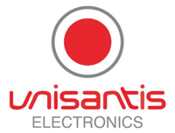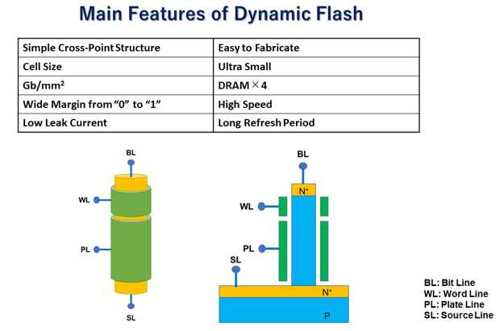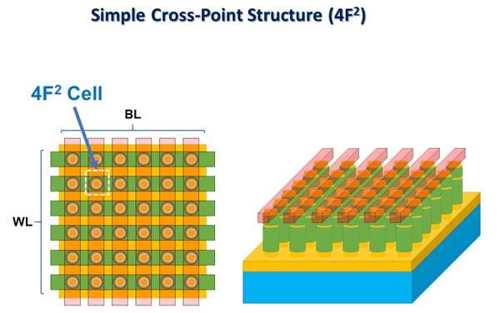IMW: Unisantis Electronics Unveils Dynamic Flash Memory Technology as DRAM Alternative
Reducing frequency and overhead of refresh cycle and capable of delivering improvements in speed and power compared to DRAM
This is a Press Release edited by StorageNewsletter.com on May 25, 2021 at 2:31 pmUnisantis Electronics Singapore Pte. Ltd. unveiled developments in Dynamic Flash Memory (DFM) technology, a leap forward in the industry’s search for alternatives to DRAM for future low-cost high-density embedded or standalone memory applications.
DFM is able to offer faster speeds and higher density when compared to DRAM or other types of volatile memory.
It was presented for the first time at the 13th IEEE International Memory Workshop (IMW), by its inventors, Drs. Koji Sakui and Nozomu Harada, Unisantis. DFM was well received by the IMW’s Scientific Committee, for having demonstrated not only performance benefits but also for its strategy of having been developed as an easy-to-implement DRAM replacement. Dr. Sakui’s paper entitled Dynamic flash Memory with Dual Gate Surrounding Gate Transistor (SGT), was presented publicly on May, 18.
DRAM is a volatile, capacitor-based, destructive-read form of memory – and its challenge has long been to continue packing in more storage for lower cost, without increasing power consumption. DFM takes a new approach to overcome limitations of conventional volatile memory such as DRAM, with its inherent short, regular and power-hungry refresh cycles, as well as destructive read processes.
It is also a type of volatile memory, but since it does not rely on capacitors it has fewer leak paths, it has no connection between switching transistors and a capacitor. The result is a cell design with the potential for increases in transistor density and, because it not only offers block refresh, but as a flash memory it offers block erase – DFM reduces the frequency and the overhead of the refresh cycle and is capable of delivering improvements in speed and power compared to DRAM.
By utilizing TCAD simulation, the company has proven DFM has a substantial potential to increase density 4x compared to DRAM. The scaling of DRAM has almost stopped at 16Gb, according to recent IEEE ISSCC (International Solid-State Circuits Conference) papers.
Modelling DFM at 4F2 cell density shows how perfectly structured DFM is (see 4F2 cell image here). The design and development of DFM means significant Gb/mm² improvements, and today’s limits on DRAM (currently 16Gb) could immediately see increases to 64Gb memory using DFM’s enhanced cell structure.
Replacing DRAM is a major challenge for the industry, not only because DRAM today accounts for over 50% of the current market demand for memory (Yole Development, 2020). Forecasts also suggest the need for this type of low cost, high density DRAM by 2025 will continue to grow and exceed $100 billion. But technology challenges also lie ahead presented by some of the proposed replacements, including capacitor-less DRAM, ZRAM or simplistic GAA and Nanosheet approaches, all which have their own limitations compared to DFM.
The firm is a transformative semiconductor company, with a patented surround gate transistor (SGT) technology, a 3D transistor design which offers system design and performance advantages to the manufacturers of memory and image sensor semiconductors and is essential for the high-tech industry as it scales to very small nodes.
The company is built on a history of the memory semiconductor market, having been established by Dr. Fujio Masuoka in Singapore in 2008 following his work in developing flash memory at Toshiba. DFM was developed by the firm with the proven technological principles of SGT Technology-3D building on that work and the company’s innovations, particularly in memory semiconductors.
Koji Sakui, co-inventor of DFM, Unisantis, commented: “The memory industry has long-since accepted DRAM technology is nearing the end of its life, but its significant market means any replacement technologies must provide the right balance of performance, costs and future scalability. After significant internal research and testing, we are delighted to unveil DFM to the market as the leading long-term viable option to DRAM.“
Following today’s unveiling, the company is now seeking to further its own technical development, and in parallel, to testing and demonstrating the features and fuller potential of DFM externally with a series of memory and foundry partnerships.
Further details on DFM and the application of the company’s SGT technology will be shared at future events.
Background information:
DFM: not another ZRAM, and not an emerging memory
Attempts to develop DRAM without capacitors have been unsuccessful, as seen in ZRAM where the margins between 1 and 0 have been too narrow – both ZRAM and DFM approaches are Gain Cells but in DFM the PL gate eliminates the FB (Floating Body), and with an increase in the 1 and 0 margin results in noticeably increased speeds and improvements in the reliability of the memory cell. It does this by using the PL (Plate Line) gate to ‘stabilize’ the FB (Floating Body) and by separating 1 write and 0 erase modes, allows for the widest possible margin – avoiding issues with noise and the fluctuation of the FB. The wide margin in DFM will offer other design benefits which Unisantis will be announcing in the near future.
Unlike the so-called ’emerging memory technologies’ (MRAM, ReRAM, FRAM, PCM), DFM does not involve adding additional materials on top of a standard CMOS process – an approach that drives up the cost, prohibitively.
About Unisantis
Unisantis Electronics Singapore Pte Ltd. is a transformative semiconductor R&D company, with a patented surround gate transistor (SGT) device technology which offers cost, density and power advantages to the designers and manufacturers of logic and memory technologies. It was established in 2008 to transform the semiconductor industry by developing a vertical surrounding gate transistor, work that was successfully spearheaded by Dr. Fujio Masuoka, who is widely regarded as the inventor of flash memory during his time at Toshiba.
Surrounding Gate Transistors or SGT Technology today are covered by over 700 Unisantis international patents, and represent the ultimate evolution in 3D transistor design, essential for modern electronics as the industry scales to very small nodes. SGT technology has multiple use-cases for memory design including SRAM, DRAM, MRAM, RRAM/ReRAM as well as logic circuits and CMOS image sensors.


















 Subscribe to our free daily newsletter
Subscribe to our free daily newsletter

